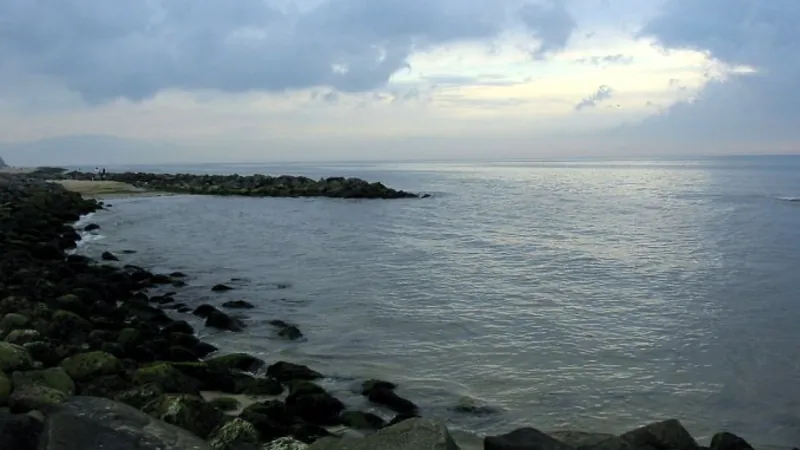
Unveiling the Mysteries: Giant Sand Structures Beneath the North Sea Challenge Geological Norms
2025-07-10
Author: Sarah
Groundbreaking Discovery Beneath the Waves
In a stunning revelation, scientists have uncovered massive sand mounds lurking beneath the North Sea that challenge everything we think we know about geology. For years, these enormous structures have baffled researchers, but new findings have unveiled a geological phenomenon unlike anything previously recorded.
How Did These Mounds Form?
Deep in the northern North Sea, off Norway's coast, seismic data and rock samples have illuminated the mystery behind these colossal formations. Researchers discovered that millions of years ago, these mounds sank, causing older, lighter sediments known as "ooze" to bubble up from below. This pivotal study, published in "Communications Earth and Environment" on June 21, sheds light on their formation and implications for future carbon storage.
The Great Debate: Origins of the Mounds
Previously, the scientific community was divided over the origins of these sand mounds, debating whether they resulted from landslides, sandstone push-ups, or mud forcing its way through rock layers. Using advanced three-dimensional seismic datasets along with rock samples, the team meticulously analyzed these formations and their surroundings to trace their origins.
A Surprising Geological Twist
What they found was astonishing: these mounds are encased in ancient ooze, predominantly consisting of fossilized microorganisms. Chemically, the mounds resemble younger sands that appear later in the geological timeline, indicating that they sank beneath the softer ooze, flipping the conventional geological layering on its head.
The Sinkites and Floatites: A New Geology Vocabulary
In a groundbreaking twist, the researchers encountered a need for new terminology. They dubbed these sunken structures "sinkites," while the lighter ooze that rose to the surface was tagged "floatites." This discovery reveals that seismic activities or pressure changes can turn solid sands into fluid-like behavior, allowing them to navigate through the seabed and settle beneath layers of lighter sediments.
Implications for Carbon Storage and Beyond
The team initially investigated these mounds as potential sites for carbon dioxide storage. However, this study underscores the importance of understanding geological behavior in the area to ensure that carbon can be stored safely. As co-author Mads Huuse, a geophysicist from the University of Manchester, noted, "Understanding how these sinkites formed could significantly change how we assess underground reservoirs, sealing, and fluid migration — all vital for effective carbon capture and storage."
A Rediscovered World Beneath the Sea
This extraordinary research has opened up new avenues in geology, showcasing how sediment structures can develop in unpredictable ways. The implications are vast and could reshape our scientific approach to understanding the Earth's crust — one discovery at a time.



 Brasil (PT)
Brasil (PT)
 Canada (EN)
Canada (EN)
 Chile (ES)
Chile (ES)
 Česko (CS)
Česko (CS)
 대한민국 (KO)
대한민국 (KO)
 España (ES)
España (ES)
 France (FR)
France (FR)
 Hong Kong (EN)
Hong Kong (EN)
 Italia (IT)
Italia (IT)
 日本 (JA)
日本 (JA)
 Magyarország (HU)
Magyarország (HU)
 Norge (NO)
Norge (NO)
 Polska (PL)
Polska (PL)
 Schweiz (DE)
Schweiz (DE)
 Singapore (EN)
Singapore (EN)
 Sverige (SV)
Sverige (SV)
 Suomi (FI)
Suomi (FI)
 Türkiye (TR)
Türkiye (TR)
 الإمارات العربية المتحدة (AR)
الإمارات العربية المتحدة (AR)